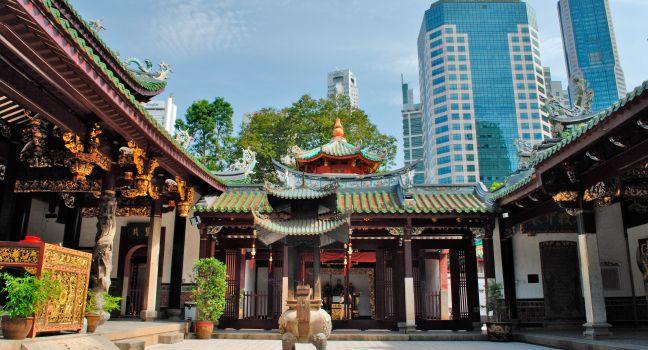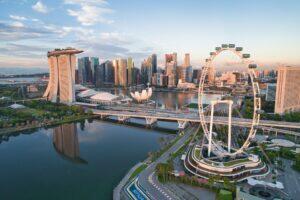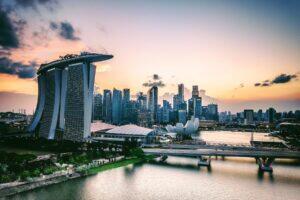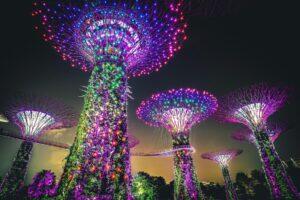Fodor's Expert Review Thian Hock Keng Temple

This structure was completed in 1842 to replace a simple shrine built 20 years earlier. It's one of Singapore's oldest Chinese temples, built on the spot where, prior to land reclamation, immigrants stepped ashore after a hazardous journey across the China Sea. In gratitude for their safe passage, the Hokkien people dedicated the temple to Ma Chu P'oh, the goddess of the sea. It's richly decorated with gilded carvings, sculptures, tile roofs topped with dragons, and fine carved-stone pillars. On either side of the entrance are two stone lions. The one on the left is female and holds a cup symbolizing fertility; the other, a male, holds a ball, a symbol of wealth. If the temple is open, note that as you enter, you must step over a high threshold board. This serves a dual function. First, it forces devotees to look downward, as they should when entering the temple. Second, it keeps out wandering ghosts—ghosts tend to shuffle their feet, so if they try to enter, the threshold board will... READ MORE
This structure was completed in 1842 to replace a simple shrine built 20 years earlier. It's one of Singapore's oldest Chinese temples, built on the spot where, prior to land reclamation, immigrants stepped ashore after a hazardous journey across the China Sea. In gratitude for their safe passage, the Hokkien people dedicated the temple to Ma Chu P'oh, the goddess of the sea. It's richly decorated with gilded carvings, sculptures, tile roofs topped with dragons, and fine carved-stone pillars. On either side of the entrance are two stone lions. The one on the left is female and holds a cup symbolizing fertility; the other, a male, holds a ball, a symbol of wealth. If the temple is open, note that as you enter, you must step over a high threshold board. This serves a dual function. First, it forces devotees to look downward, as they should when entering the temple. Second, it keeps out wandering ghosts—ghosts tend to shuffle their feet, so if they try to enter, the threshold board will trip them.
Inside, a statue of a maternal Ma Chu P'oh surrounded by masses of burning incense and candles dominates the room. On either side of her are the deities of health (on your left) and wealth. The two tall figures you'll notice are her sentinels: one can see for 1,000 miles; the other can hear for 1,000 miles. The gluey black substance on their lips—placed there by devotees in days past—is opium, meant to heighten their senses. Although the main temple is Taoist, the temple at the back is Buddhist and dedicated to Kuan Yin, the goddess of mercy. Her many arms represent how she reaches out to all those who suffer on earth.
This is a good place to learn your fortune. Choose a number out of the box, then pick up two small stenciled pieces of wood at the back of the altar and let them fall to the ground. If they land showing opposite faces, then the number you have picked is valid. If they land same-side up, try again. From a valid number, the person in the nearby booth will tell you your fate, and whether you like the outcome or not, you pay for the information. Leave the grounds by the alley that runs alongside the main temple. The two statues to the left are the gambling brothers. They will help you choose a lucky number for your next betting session; if you win, you must return and place lighted cigarettes in their hands.
READ LESS









